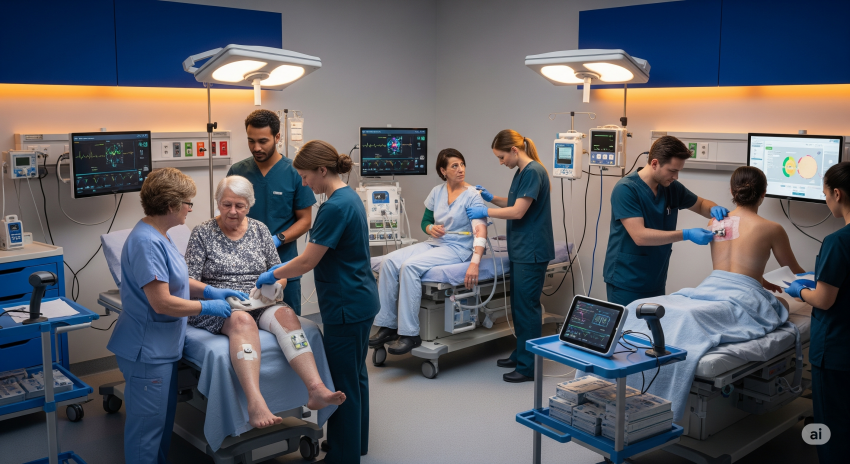The global wound care market is experiencing robust growth, expanding from $20.97 billion in 2024 to a projected $30.48 billion by 2030, driven by a compelling combination of demographic and clinical factors. The increasing incidence of traumatic injuries, particularly from industrial accidents and road traffic incidents, is creating unprecedented demand for comprehensive wound management solutions. With the World Health Organization reporting 1.3 million annual traffic fatalities and up to 50 million non-fatal injuries, coupled with 270 million workplace accidents globally, healthcare systems are rapidly incorporating advanced wound care products into standard treatment protocols.
Download PDF Brochure:https://www.marketsandmarkets.com/pdfdownloadNew.asp?id=371&utm_source=reportsnreports.com&utm_medium=refferal&utm_campaign=kk20
The market dynamics reveal a significant shift toward advanced wound care solutions, which commanded the largest market share in 2024. This segment’s dominance stems from growing patient awareness of proper wound care and the escalating prevalence of hospital-acquired infections that demand sophisticated management approaches. Chronic wounds, including diabetic foot ulcers, pressure ulcers, and venous leg ulcers, represent the largest wound type segment, reflecting the mounting burden of diabetes and an aging global population requiring specialized, long-term care solutions.
Asia Pacific emerges as a particularly promising growth region, driven by rising diabetes prevalence and enhanced research and development focus. The region benefits from an expanding presence of medical device manufacturers and biotechnology firms, accelerating innovation and product availability. Digital integration, including AI-driven wound assessment and smart dressings, is opening new market avenues while strategic joint ventures and partnerships enable multinational companies to address diverse regional needs more effectively.
Despite promising growth prospects, the market faces significant challenges that could impede widespread adoption. The high cost of advanced wound care products, particularly bioengineered skin substitutes and negative pressure wound therapy systems, creates substantial economic barriers for patients and healthcare systems, especially in low and middle-income countries. Chronic non-healing wounds can cost up to $50 million annually to manage, with diabetic foot ulcers affecting approximately 25% of individuals with diabetes and representing a leading cause of hospitalization.
Download PDF Brochure:https://www.marketsandmarkets.com/pdfdownloadNew.asp?id=371&utm_source=reportsnreports.com&utm_medium=refferal&utm_campaign=kk20
The shortage of adequately trained healthcare professionals presents another critical challenge, particularly in under-resourced regions. Effective wound management requires not only access to specialized products but also skilled clinical application and ongoing patient monitoring. Many nurses and general physicians lack formal training in wound care protocols, leading to treatment delays, misdiagnosis, and suboptimal use of advanced therapies. This expertise gap limits the ability to manage complex conditions and restricts market expansion for manufacturers whose innovations remain inaccessible to large segments of the global population.
North America currently holds the largest market share, supported by high healthcare spending, advanced medical infrastructure, and strong adoption rates of innovative wound care technologies. Hospitals and clinics represent the dominant end-user segment, equipped with expert staff and cutting-edge medical equipment to handle complex wound cases effectively. The market ecosystem encompasses product manufacturers, healthcare facilities, and regulatory agencies working together to deliver comprehensive wound care solutions, while recent developments include strategic acquisitions, product launches, and educational collaborations aimed at improving care standards and accessibility.

